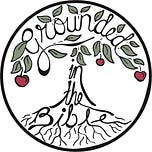If you want to receive Grounded in the Bible’s weekly Bible studies in your inbox each week, you can subscribe here! Join us as we "grow in the grace and knowledge of our Lord and Savior Jesus Christ."
It’s that time of year. Time for gardening. Have you ever grown a garden? We always had a huge garden when I was growing up, and even now I have a little garden in my back yard, even in the middle of town. There’s something about a tomato right from the vine that is so much better than anything store-bought.
In our last I AM statement for this series, we are looking at another type of vine. Jesus’ audience probably would have been thinking of grape vines, not tomatoes, but the comparison is the same. Jesus said:
John 15:1: “I am the true vine, and my Father is the gardener.”
John 15:5: 5 “I am the vine; you are the branches. If you remain in me and I in you, you will bear much fruit; apart from me you can do nothing.”
Let’s look at these verses in context.
John 15:1-8: 15 “I am the true vine, and my Father is the gardener. 2 He cuts off every branch in me that bears no fruit, while every branch that does bear fruit he prunes so that it will be even more fruitful. 3 You are already clean because of the word I have spoken to you. 4 Remain in me, as I also remain in you. No branch can bear fruit by itself; it must remain in the vine. Neither can you bear fruit unless you remain in me.
5 “I am the vine; you are the branches. If you remain in me and I in you, you will bear much fruit; apart from me you can do nothing. 6 If you do not remain in me, you are like a branch that is thrown away and withers; such branches are picked up, thrown into the fire and burned. 7 If you remain in me and my words remain in you, ask whatever you wish, and it will be done for you. 8 This is to my Father’s glory, that you bear much fruit, showing yourselves to be my disciples.
1. What is the story surrounding Jesus’ I AM statement?
Similar to Jesus’ statement from the lesson on I AM the Way, the Truth, and the Life, Jesus is still teaching his disciples the most important things he wants them to know on the night before his death. He has told them that he is the way to the Father, and if they believe in him, they will have eternal life. He also promises to send them the Spirit of Truth to give them what they need in Jesus’ absence.
Jesus is teaching the disciples what they need to know to remain strong and do God’s work even when Jesus isn’t physically present with them. They are to love Jesus and obey his commands. They are to not be afraid. They are to remember that Jesus will come back for them.
How do the disciples do all of these things? That’s when Jesus throws them another comparison that they are likely to understand. Just as branches must remain connected to the vine in order to survive, so the disciples must remain in Christ if they want to have life. So he gives them this mental picture: “I AM the true vine.”
2. What would this statement have meant to the original audience?
The idea of a vine would mean many things to the disciples. First, grape vines were common in the area, so they would likely have some knowledge about what it takes to tend grape vines and keep them healthy, even if they didn’t own a vineyard themselves. Second, the Old Testament often compared the nation of Israel to a vine. Third, Jesus has already told parables related to vines and vineyards. Let’s look at each of these in more depth.
Tending Grape Vines
Vines have a tendency to grow without boundaries. In order to keep grape vines healthy and under control, the vines must be tended carefully through either pruning or cutting off branches. This helps keep the grape vines within its boundaries so the owner can more easily access the grapes during harvest.
How does the owner know which branches of the vine should be pruned vs cut off? He differentiates between the healthy branches that bear fruit and the unhealthy or dead branches that do not bear fruit. The extra branches that don’t bear fruit can suck up nutrients and water from the main vine, which diminishes the nutrients available for the fruit-bearing branches. By cutting off these excess branches, the fruit-bearing branches can flourish. This helps the whole plant remain healthy. These unproductive branches are then thrown away and burned.
Then the remaining branches, the fruit-bearing branches, must be pruned. This involves cutting off any excess buds or leaves or parts of the branch that aren’t needed. This allows nutrients to flow to the strongest parts of the branch to bear the best fruit.
Vines in the Old Testament
In the Old Testament, Israel is compared to a vine.
Psalm 80:8-9: 8 You transplanted a vine from Egypt;
you drove out the nations and planted it.
9 You cleared the ground for it,
and it took root and filled the land.
Just like a vine can be cut and transplanted, God cut Israel out of Egypt and transplanted it in the Promised Land, where he made the nation flourish. However, Israel decided not to remain loyal to God.
Isaiah 5:1-2: 5 I will sing for the one I love
a song about his vineyard:
My loved one had a vineyard
on a fertile hillside.
2 He dug it up and cleared it of stones
and planted it with the choicest vines.
He built a watchtower in it
and cut out a winepress as well.
Then he looked for a crop of good grapes,
but it yielded only bad fruit.
God did all the work to plant and tend his vineyard, Israel, but even with all his effort and his faithfulness, Israel still only yielded bad fruit. Jeremiah says that they turned into a corrupt, wild vine.
Jeremiah 2:21: I had planted you like a choice vine
of sound and reliable stock.
How then did you turn against me
into a corrupt, wild vine?
The corruption was due to their pursuit of idols. They built altars and worshipped false gods instead of the One True God.
Hosea 10:1-2: 10 Israel was a spreading vine;
he brought forth fruit for himself.
As his fruit increased,
he built more altars;
as his land prospered,
he adorned his sacred stones.
2 Their heart is deceitful,
and now they must bear their guilt.
The Lord will demolish their altars
and destroy their sacred stones.
Unlike Israel as a vine, which went astray and deserted God in favor of idols, Jesus is the true vine. He will never abandon God to follow after other gods or to follow his own desires. He will remain true to the gardener who tends his branches.
Vines in the New Testament
Jesus used vineyards as a mental picture in two of his parables.
In Matthew 20:1-16, Jesus tells the parable of a landowner who had a vineyard. Starting in the early morning, he went out and hired workers for his vineyard. Then he went back out again at nine in the morning, at noon, at three in the afternoon, and again at five in the afternoon. Each time, he hired more workers. At the end of the day, when the workers were lining up to be paid, the landowner paid each one a day’s wages, just has they had agreed. The workers who were hired first were outraged that they had received the same amount as those who only worked for an hour. In this parable, Jesus was making the point that “the last will be first, and the first will be last.”
This parable tells us something about the kingdom of heaven. In the kingdom of heaven, it doesn’t matter how long or how faithfully you’ve been toiling for the kingdom. What matters is that at the end of the day, you heard the call to come work, and you responded. In the same way, everyone who responds to the call to follow Jesus will enter the kingdom of heaven, whether they responded early in life or just before death.
Then, in Matthew 21:33-46, Jesus tells the parable of a landowner who planted a vineyard, protected it with a wall and a watchtower, and built a winepress. Then, he moved away and hired tenants to tend the vineyard for him. At harvest time, the landowner sent his servants to collect his fruit, and the tenants killed them. Each time the landowner sent someone to collect his harvest, the tenants treated them the same way. Finally, he sent his son, and they killed him too. In the end, when the landowner came, he took the vineyard away from the tenants and gave it to people who would produce the fruit for the landowner.
In the same way, God sent priests and prophets to tell his people to follow him, and the Israelites refused to listen. They treated the prophets in much the same way that the tenants treated the landowner’s servants. Finally, God sent his only Son, and they killed him too. In the end, God will take the reward—the kingdom of heaven—away from those who refuse to follow him and will instead give the reward to those who will follow him.
Next Week
The imagery of vines and vineyards is rich in the Bible. The claim that Jesus was the true vine would have perhaps put a bit of guilt into the disciples’ hearts. They were Jews, and the Jews had consistently rejected God and followed their own way. They were supposed to be God’s vine, but they had failed. Come back next week to see how Jesus redeems the vine.
Source: Ryken, L., Wilhoit, J. C., & Longman III, T. (1998). Vine, vineyard. In Dictionary of Biblical Imagery (p. 914-917). InterVarsity Press.












